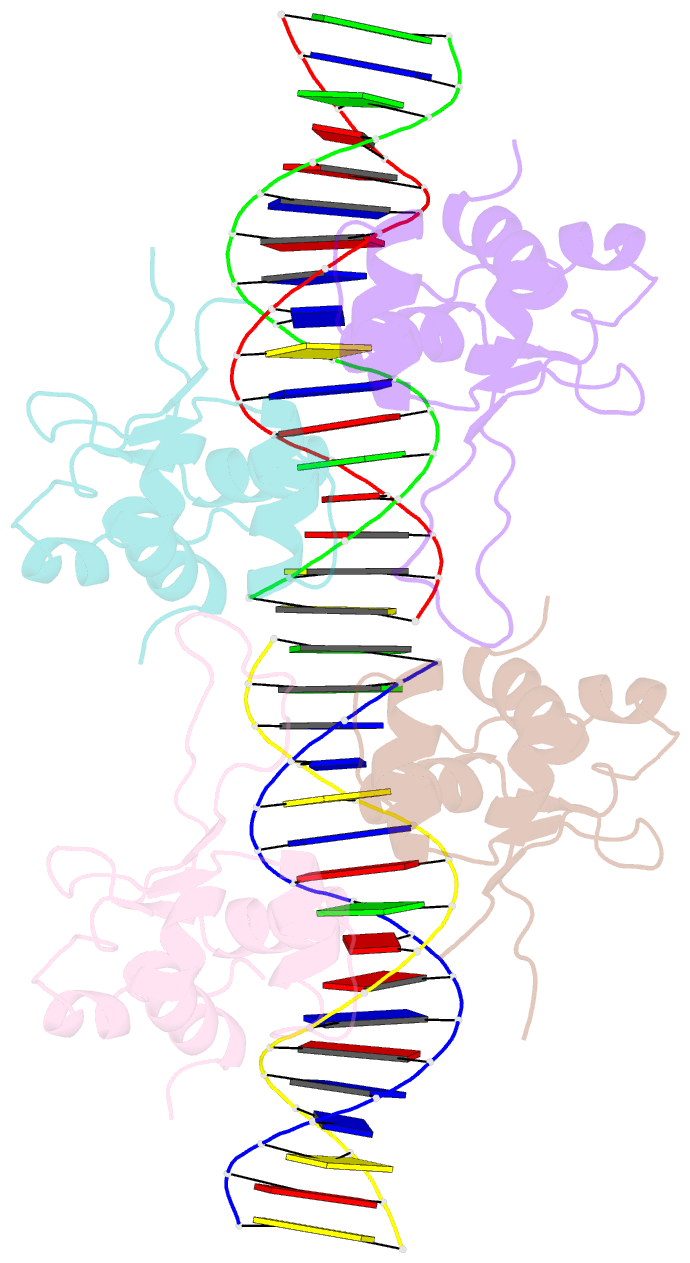Summary information and primary citation
- PDB-id
- 5d8l; SNAP-derived features in text and JSON formats;
DNAproDB
- Class
- transcription-DNA
- Method
- X-ray (2.069 Å)
- Summary
- Human hsf2 DNA binding domain in complex with 3-site hse DNA at 2.1 angstroms resolution
- Reference
- Jaeger AM, Pemble CW, Sistonen L, Thiele DJ (2016): "Structures of HSF2 reveal mechanisms for differential regulation of human heat-shock factors." Nat.Struct.Mol.Biol., 23, 147-154. doi: 10.1038/nsmb.3150.
- Abstract
- Heat-shock transcription factor (HSF) family members function in stress protection and in human diseases including proteopathies, neurodegeneration and cancer. The mechanisms that drive distinct post-translational modifications, cofactor recruitment and target-gene activation for specific HSF paralogs are unknown. We present crystal structures of the human HSF2 DNA-binding domain (DBD) bound to DNA, revealing an unprecedented view of HSFs that provides insights into their unique biology. The HSF2 DBD structures resolve a new C-terminal helix that directs wrapping of the coiled-coil domain around DNA, thereby exposing paralog-specific sequences of the DBD surface for differential post-translational modifications and cofactor interactions. We further demonstrate a direct interaction between HSF1 and HSF2 through their coiled-coil domains. Together, these features provide a new model for HSF structure as the basis for differential and combinatorial regulation, which influences the transcriptional response to cellular stress.





